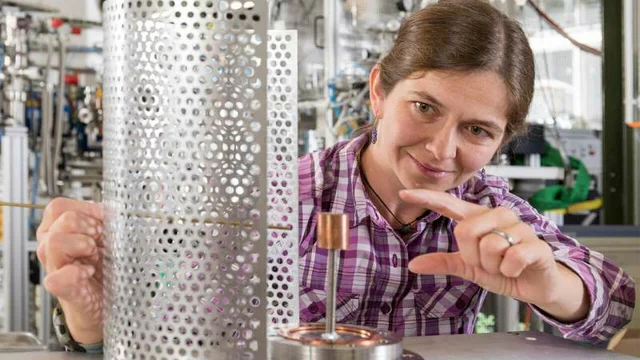8:15 PM Trap for positrons | |
For the first time a researcher from the Munich technical Institute (TUM) and the University of plasma physics. Max Planck (IPP) has turned out without loss to address positrons, antiparticles of electrons, in a trap of a magnetic field. This is a significant step towards the creation of matter-antimatter plasma of electrons and positrons, similar to plasma, which is believed to appear close to the neutron starry sky and dark holes. In an interview, doctor Eve Stenson gives her own research work. Why do you want to attract positrons in the trap? The capacity to capture and limit positrons contains a basic meaning for the study of, for example, the plasma of electron-positron pairs. This plasma gives tremendous attention to both basic plasma physics issues, for example, and astrophysics. Actually what such difficult in catching of positrons? Positrons are antiparticles of electrons, they possess what qualities, except for this, in fact they positively, not negatively. When a positron hits an electron, both quickly annihilate in a flash of light. Such as the electrons in abundance everywhere on Earth, it is very difficult to take care of positrons that way, actually what they endure all the hardships in the direction of at least some time. Fortunately, we have the most powerful positron key in the world, NEPOMUC (neutrons at the Munich positron source), here in Garching, North of Munich, at the Heinz Mayer-Leibniz scientific-Neutronsource (FRM II). It has the ability to produce 900 million positrons per second. Plasma physicists simulated this electron-positron plasma in the direction of 40 years. Now you have created a permissive step towards achieving this goal in practice. How did you manage that? In fact, it is quite difficult to Orient the charged particles, these as flattering positrons, into a magnetic trap. The same criteria of physics that limit particles from within a given trap, unfortunately, do not yet allow particles that are required to enter. Our trap contains the magnetic background, quite similar to the background of the Earth or other celestial bodies. We came up with the idea to make short-term electronic effort to the edge of the trap, in order to perform the positrons through the magnetic "rods". When we subsequently switch the current force again, the positrons remain trapped in the cell. It worked great for example, exactly what is including and we were very surprised. How long have you been able to limit positrons? ... a little over a second. No group in the world has so far managed to arrange this with antimatter in such a family trap. What are the outstanding qualities of the results for plasma physics or other fields? The aim of the APEX group (positron-electronic experiment)at The University of plasma physics. Max Planck considered the creation of plasma matter-antimatter electrons and positrons and limiting the plasma magnetic cell. The 1st step, however, is obliged to force to make and save enough positrons. The next step is to create and study such a plasma. Astrophysicists hope, in fact, that these exotic plasmas appear close to the neutron starry sky and dark holes. In terrestrial plasma physics, the symmetry of the positron and electron masses is expected to lead to fresh conclusions about waves and turbulence in plasma—conclusions that have every chance to help us apply nuclear fusion to make energy in the future. | |
|
| |
| Total comments: 0 | |
